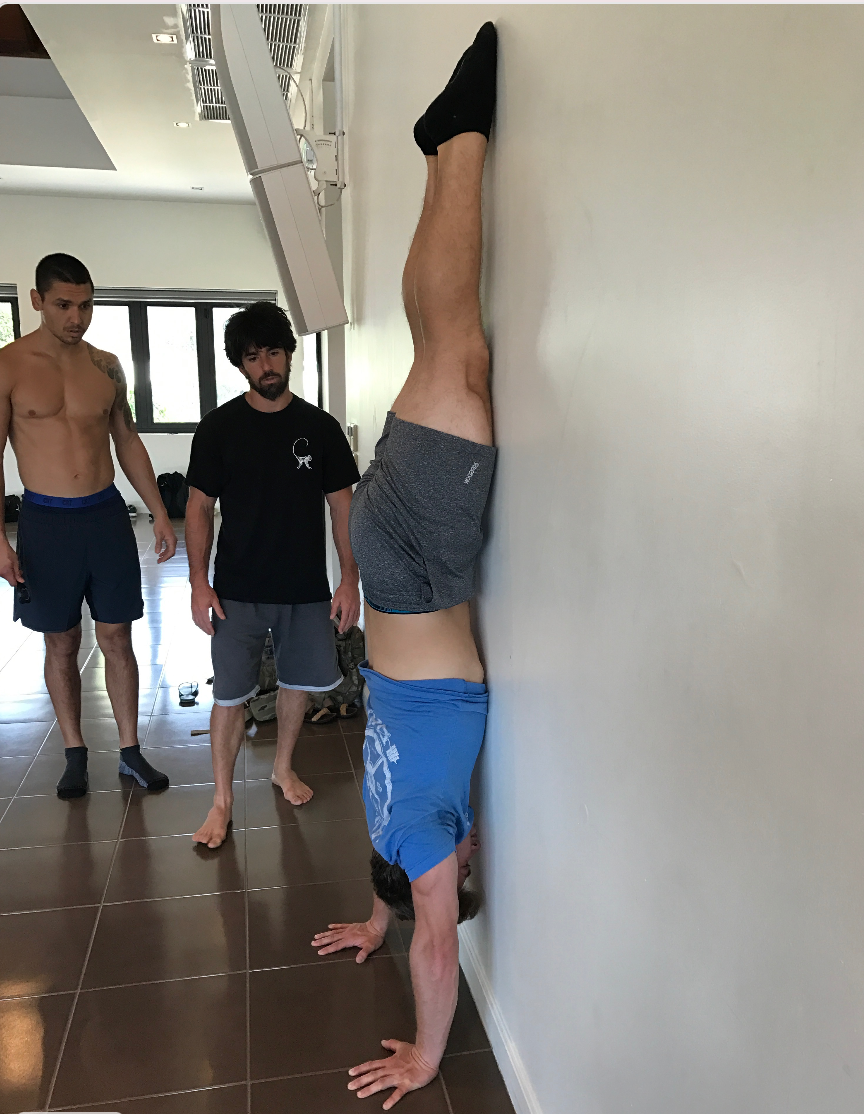I could write volumes on hand-balancing, as I have spent more than 5 years practicing daily. Just as many of you now, I had the goal of holding a freestanding handstand. However, I had no process. I would just blindly kick-up and hope for the best. I would get lucky every now and again but once I was taught the mechanisms of what is happening during a handstand, and what makes or breaks it, I made tremendous leaps and bounds forward.
Before I go on, I want to thank my teacher Ido Portal for introducing me to a process that really set the stage for success, Jon Yuen for introducing me to a playful approach once you have some basics, as well as Mikael Kristiansen, Harry Williams, and Johnny Sapinoso for guiding me in the more advanced stages. These people have taught me a ton. So, without further ado!
Learning a proper line on the wall with Ido, 2016. My legs were a bit too big, so they actually needed to touch the wall.
Today I want to share with you some tips that will speed up your progress and save you from the frustration you will undoubtedly experience along the way.
-
Embrace failure
-
Consistency over the long term
-
Measure what you can
First, you have to understand that the entire process of learning handstands IS falling out of it. In fact, you never really get better at holding a handstand; you just get better at saving yourself from the inevitable fall. The more “saves” you can make the longer you will hold a handstand. Experts say this has a direct correlation to the amount of friends you will have.
Second, don’t bother practicing handstands if you say that you have one month to achieve them. Or three. Or Twelve. I know people encourage you to set timelines for your goals, but not this one. You need to practice handstands like you practice scrolling through Facebook. Daily.
How long will it take to achieve?
It will take as long as it takes, and that’s just the right amount of time.
The last thing you should do is measure whatever you can. Write down your daily reps, sets, times, etc. Note your new personal bests and write down anything you learn during each session. Always find one “bright spot” to finish with. Even simply writing “I did my best today! :)” is enough to carry some momentum to your next session. Drawing frowning faces and writing “I suck” helps absolutely no one. You will start to believe your own delusions.
Use these simple tips and you will save yourself some frustration in the process of giving the finger to millions of years of evolution which gave us perfectly good feet to stand on. Sometimes you just should because you can.
Interested in the actual tools we use to develop 60 second handstands with our students? Book a session below to learn more about 1-on-1 instruction or to join our group classes. Click below for some of our students achieving this milestone & more.
& more!
-Kevin


